A roller derby player whips around the indoor track on her four-wheeled skates, colliding with a trio of defenders who jostle together to block her path. The scrum relents, tumbling down in one fell swoop. And one by one the players get up, ready to do it all over again.
Once a relatively obscure sport outside of the United States and Canada, roller derby has in recent years caught on in Hong Kong. Established in 2013, the Hong Kong Roller Derby team has seen its membership balloon from an original team of five players to 25 today, thanks in part to its appeal for the LGBTQ+ and straight community alike. The team, who meet up once a week for practice, are made up of players from across the world, the majority of whom are foreign to Hong Kong.

At first glance, the sport appears gratuitously violent.
Most of the time the collisions look worse than they feel. In their latest game earlier this month against the Pan-Asian Spring Rollers, one player hurtled full speed against a human wall of defenders, only to ricochet and hit the floor with a thundering smack. The crowd winced, but she got up, adjusting her kneepads, seemingly unfazed by the impact.
The rules
So how is roller derby played? It is tempting at first to describe it as American football on wheels. But the game, which takes place at a roller rink, is a far cry from the full force body slams seen in the male-dominated sport.
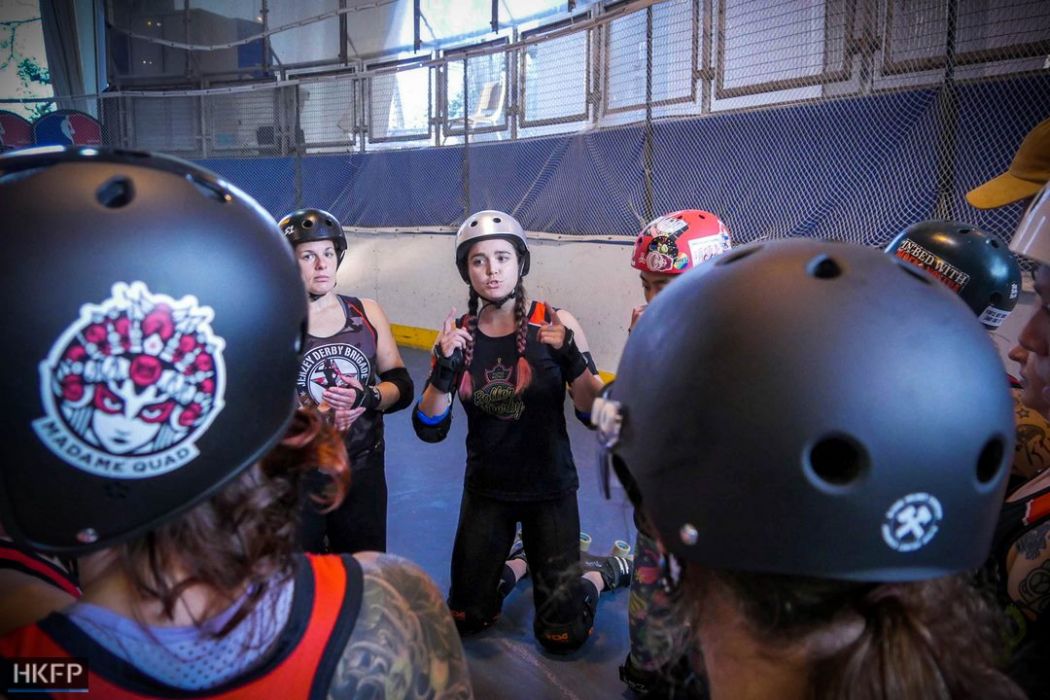
Roller derby is a full-contact sport with two competing teams of five. Each team has a “jammer,” responsible for scoring as many points as possible by passing the opposing team’s four “blockers,” who act as a line of defence.
The game is split into two 30-minute sessions with multiple two-minute “jams,” broken up by 30-second breaks.
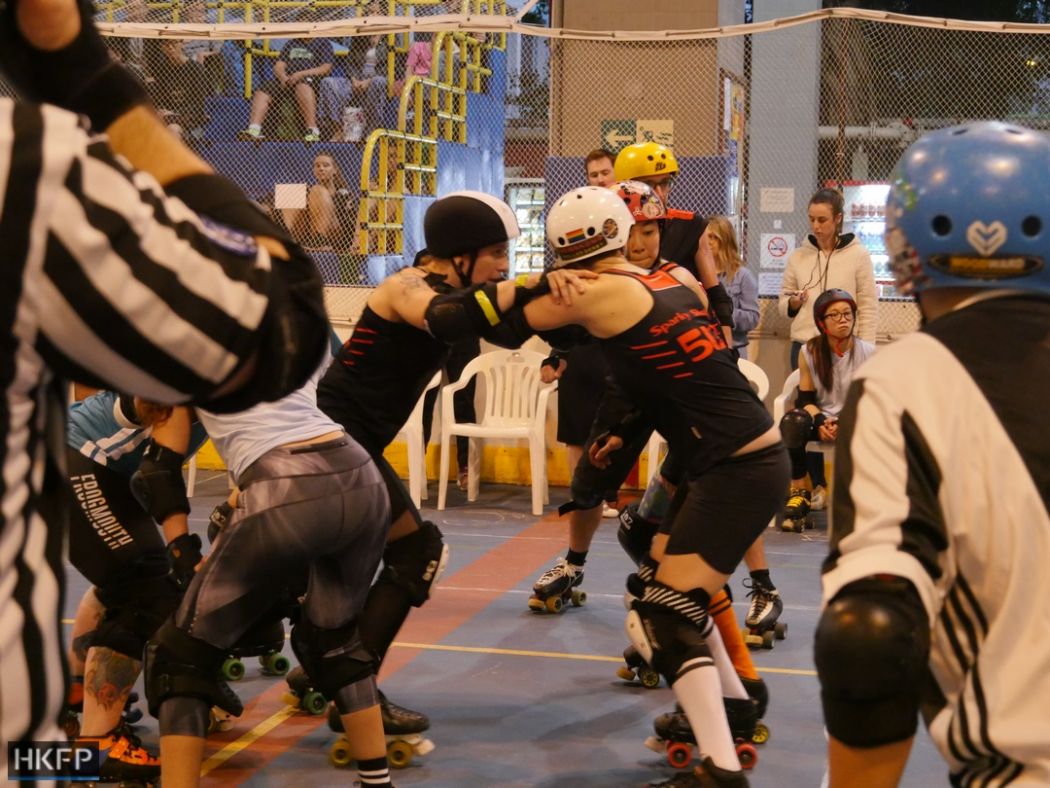
As with any sport, there are rules. No slaps. No punches. And no blocking above the shoulders. In order to guard against injuries players don protective gear head to toe: helmets, mouthguards, and pads for their joints. Despite this, the activity has its dangers.
At one point during the game, player Snooky Wong sat on the sideline clutching a twisted knee, flinching in pain. By the end of the match, teammates compare their bruises like commemorative war wounds.
An inclusive sport
There is something inherently rock ‘n’ roll about roller derby – perhaps it’s the witty nicknames or the crudely drawn body illustrations. But there appeared to be a genuinely uplifting sense of camaraderie between players and even competing teams.
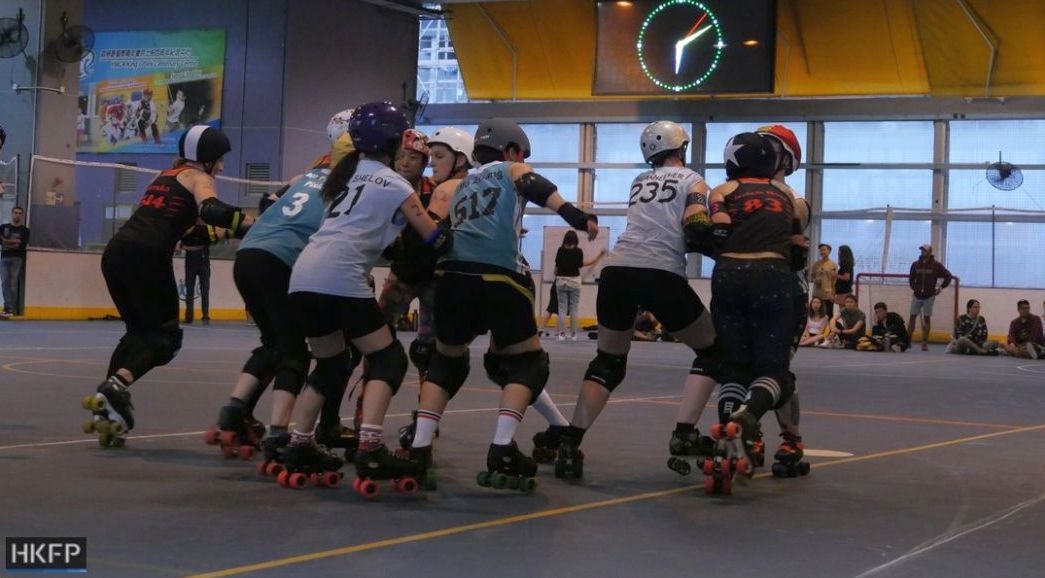
“I was just in awe of the strength and the amazing skills of these women and how they just went out and owned it, like a badass,” Imogen “Rogue Bludger” Dean told HKFP.
Dean, a queer woman who has been playing since 2013, says she was drawn to roller derby for its diverse community of players from all walks of life.
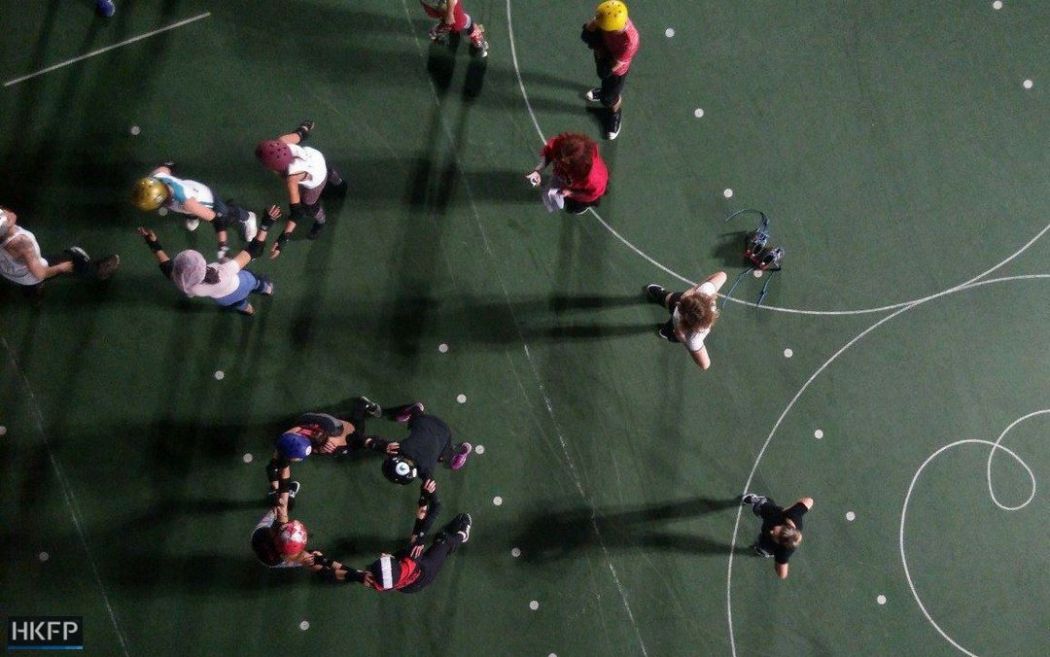
“I feel like roller derby gives me a space to be whoever I am without having to hide or not talk about any aspects of my life,” she said.
“I think it’s so important for women to have a sport which is powerful, which is strong, which is not preceded by men,” she added. “I think it is such an awesome thing for women to be pioneering a sport and to be paving the way.”

Despite being open to all sexes, roller derby is overwhelmingly dominated by women players, many of whom are members of the LGBTQ+ community. According to the Women’s Flat Track Derby Association – an international governing body of women’s flat track roller derby representing more than 450 members – the body makes “an explicit commitment” to improving diversity and inclusion, which involves adopting strong anti-discrimination practices and appropriate punishment for those who violate them.
Becky “Sparky Shotgun” Daley, who travels from Macau every week to train, told HKFP that these rules ensure that inclusivity remains at the heart of roller derby. “Our sport is so inclusive it’s even written into the rule books,” she said. “The referees have to refer to the ladies and gents as people. I think when a rule like that is written down there’s only one path it can take: inclusiveness and no bias.”
These principles extend far beyond practising the sport. They provide its players with a sense of belonging in communities that have otherwise been historically marginalised.

Anja “The Molotov Princess,” a transgender woman and park skater who coaches new players, told HKFP that roller derby has provided her with a community of people who she could connect with.
“I’m attracted to it. It’s a community I relate to and love being apart of, and skating, in general, gave me a sense of freedom. It’s oddly cathartic to lace up my boots and go for a skate,” she said.
Milanie “Pain Goodall” Bekker, a queer woman from South Africa, told HKFP she joined roller derby after watching the 2009 film Whip It starring Ellen Paige, an American actress who has become an LGBTQ+ icon in recent years.
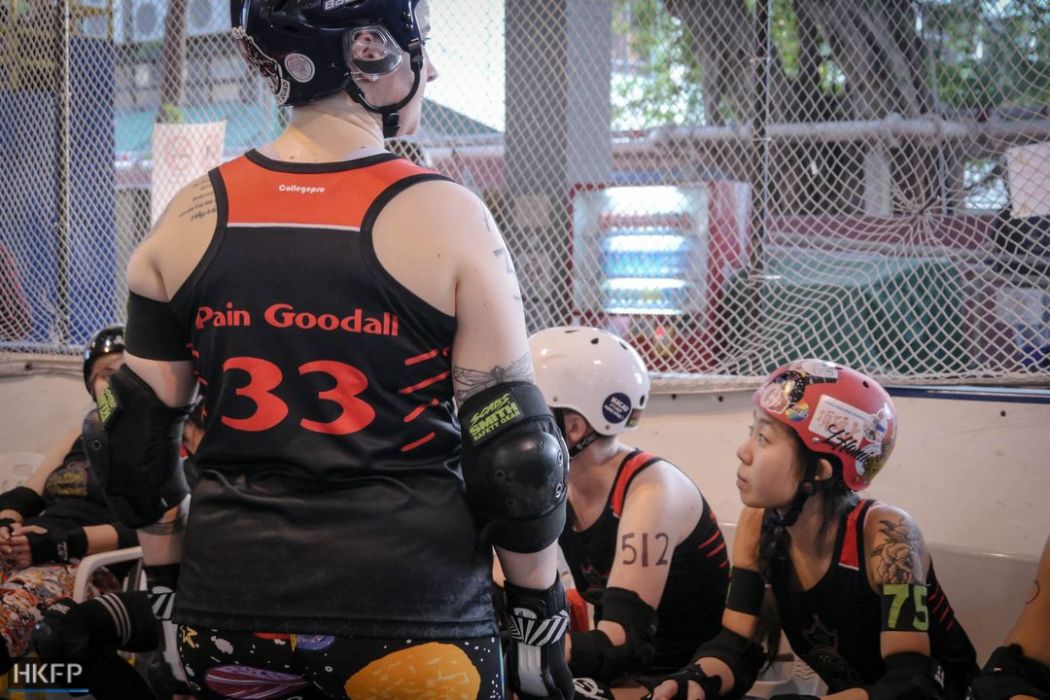
“I was blown away by the fact that these women were able to be strong, goofy, athletic and look good skating around a track,” she said.
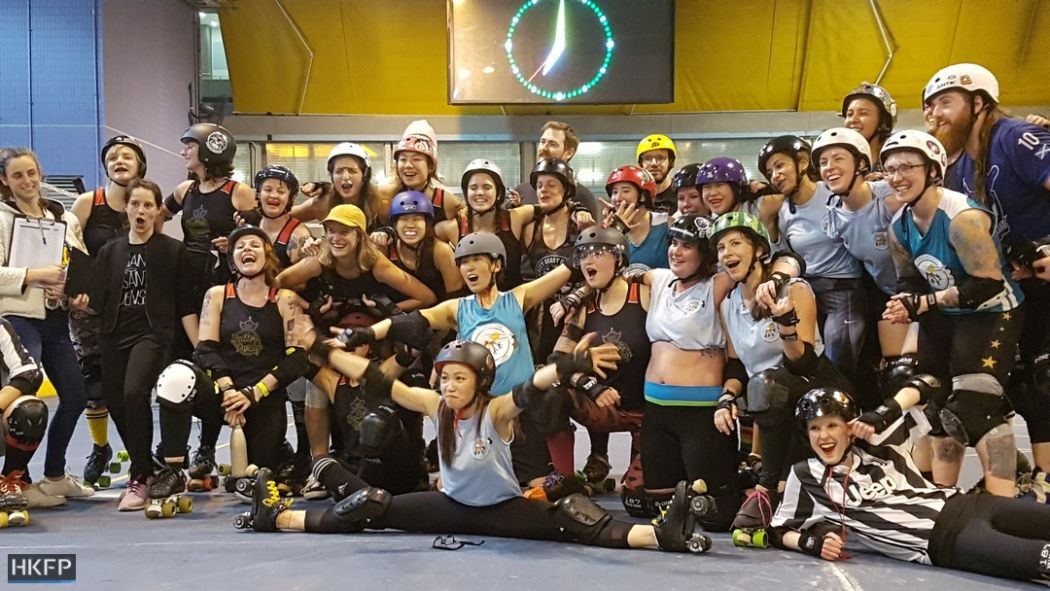
“Roller Derby is not just a sport for me, it’s a place I can live my truth without fear of people making me feel unwelcome or unsafe, or commenting on my sexuality in relation to their comfort.”
